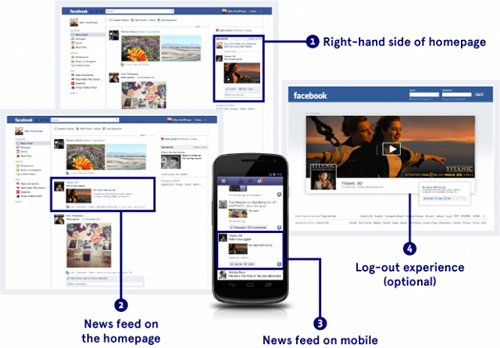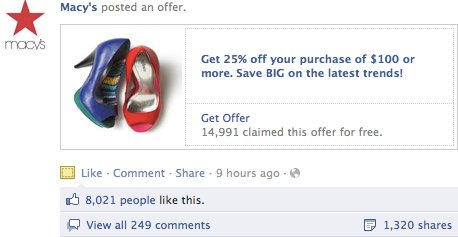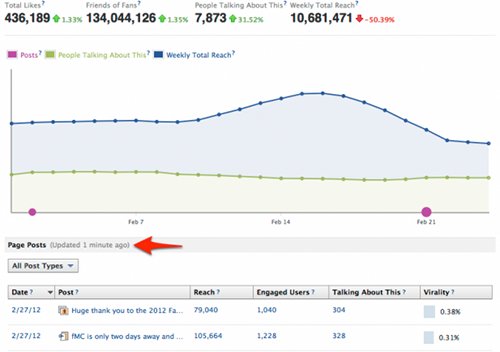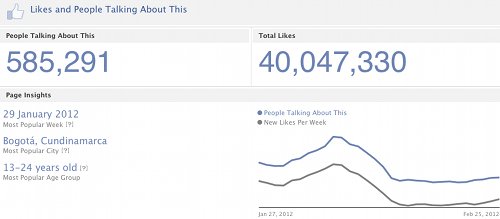10 changes to Facebook you need to know
The changes that Facebook announced at their fMC event in New York on Wednesday represent a fundamental shift in brands’ relationship with Facebook. The new Timeline functionality for brand pages is only the tip of the iceberg – Facebook have, in effect, given brands a 30 day ultimatum to totally change the way they manage their community on Facebook.
Here are the 10 things you need to know about the changes:
1. Direct Messages between pages and anyone
![]()
Facebook have introduced direct, private messaging between any Facebook user and pages. When arriving at a brand’s page, someone simply needs to click the ‘Message’ button (placed prominently right next to the ‘Like’ button) to initiate the process. Brands have the option of disabling this functionality if they wish.
This means fans and non-fans alike suddenly will be expecting near to real-time and personalised customer service on Facebook, something, let’s face it, most brands are just not prepared for. Those brands that disable the functionality will appear to be distant and un-progressive.
Expect brands who have properly operationalised social media customer service to gain even more competitive advantage, and many more social media fuelled crises for brands that haven’t, as frustration at unanswered messages (or the inability to send them) spills over into the rest of social media.
2. The blurring of paid, earned and owned media

Facebook released a slew of changes in the way brands can pay to promote themselves on the platform. To quote Facebook’s Director of Global Business Marketing, Mike Hoefflinger:
We are evolving from ads to stories. Ads come from anyone at anytime. Stories come from people and things that you’re connected to.
They’re pushing brands to reach more of their fans and their friends through ‘featured stories’ in their newsfeeds – whether that be on the web or on their mobile phones. ‘Featured stories’ are amplified page updates linked to users’ social graphs, with their friends and other fans actions driving recommendation and therefore effectiveness. These are not ‘ads’ in any conventional sense of the word, but a new combination of brand conversation and word of mouth, irrevocably blurring the lines between paid, earned and owned media to the extent that the lines no longer exist.
Collectively being referred to as ‘Reach Generator’ by Facebook (along with the Right-hand and Log-out formats shown above), there’s a fixed fee price structure based on the number of fans a page has. Facebook say that this will take the average reach of a page update from 16% to 75% and that its tests have shown the news feed ads receive a 5-10x higher click-through rate than standard ads.
This change shifts the balance even further towards specialist social agencies – traditional media agencies, hampered by structural issues relating to the fee arrangements they’ve struck with their clients spanning all types of media buying, have never been able to deliver well on Facebook as they’ve been unable to apply the right level of skill and resource required. However, they woke up this morning to find that their media plans are based on newtonian physics in a world where quantum theory reigns.
3. Facebook offers

Facebook offers is a new type of post that allows brands to freely distribute coupons to fans that can can be accepted straight from their web or mobile newsfeed. They also can be promoted through ‘Reach Generator’ ads to a wider, targeted audience. One click (or tap on mobile) sends the offer to your email account. From there, the voucher can be used at a bricks-and-mortar store or entered as a coupon code into an ecommerce site. When you accept a Facebook offer, a story is generated and may be shown in your friends’ newsfeeds, increasing the viral reach of the promotion.
This is a great feature for CPG/FMCG brands wanting to drive product trial, or retailers wanting to use discounting to drive sales.
4. Real-time insights

Facebook are introducing real-time insights, and will start reporting stats with a delay of 5-10 minutes (previously this was a few days at least). Data about page posts will appear in Facebook Insights just minutes after posting, including how many views, clicks, media consumptions, and spam marks. Other stats will be real-time too, such as total reach and “people talking about this”. Page-level data aggregations will still be delayed a few days.
This will close the loop for good community management, as it will be instantly obvious whether a post is going to be successful or not, and the ongoing real-time feedback will make it much easier for those managing pages to develop a real sense of what works at what doesn’t with their fan communities.
Real-time insight into post performance also feeds into the new ‘Reach Generator’ product, as it will allow those managing pages to know which posts to amplify with paid media – either because they’re performing well organically and will therefore generate a similar response amongst a wider audience if promoted, or if important posts are not getting the desired pick-up without paid support. Another reason that those doing the media ‘planning’ should be part of the same team as those doing the community management.
5. Competitive insights

Facebook is now revealing much much more data about page’s fanbases to non-admins, accessible through the ‘Likes’ box on all pages. This includes a 1 month historical graph of both ‘People Talking About’ and a brand new metric, ‘New Likes per Week’, as well as some base-level demographic data.
This will come in very handy for ongoing analysis of competitor activity and performance.
6. No default landing page
Facebook have removed the ability to set a tab as the default view of a page for non-fans (which often were implemented as ‘fangates’, encouraging people to become fans before giving them access to an incentive). Pages still can have fangates on apps, these just can’t be the default view when people arrive at the page direct or through search – but these still can be used as a landing page for ads.
This change could drastically reduce most brand’s organic fan growth, and certainly will require brands with fangates to re-think before the 30th March.
7. Apps

Facebook have made apps are more visible, moving them from tabs listed in the left-hand sidebar to large 111×74 pixel boxes with text labels below the main image – each able to be separately branded with an image of its own. Page admins can set the order of the apps easily though the admin interface.
Apps themselves now appear in a 810 pixel wide canvas (i.e. over 50% wider than previously) – potentially allowing them to be much more engaging experiences.
8. Highlights feed

When users visit a page, they’ll see a mix of stories published by the page itself, by their friends, and stories from other users that have received a lot of Likes, comments, and shares.
Posts to or mentioning a page by a visitor’s friends are always visible, which can be a problem (see screenshot above), but brands do have the have the option of either removing the ‘Recent Posts by Others’ box entirely or requiring posts to be moderated before they can appear – this will undoubtedly be a useful feature for brands in time of crisis, allowing them to monitor and manage conversations without going to the drastic measure of turning fan posts off all together.
9. Pinned and other post types
Facebook have also introduced a selection of new options for posts:
- Pinned posts keep important stories at the top of the highlights feed for up to seven days (pinned post are marked by yellow tags – see the Starbucks example above).
- Page posts can also be ‘starred’. Starring makes a post go full width across the highlights feed to prominently feature the story.
- Page admins can also hide individual posts without deleting them. This allows pages to display only its most engaging posts without losing important data.
- There’s a new ‘milestone’ post type, which have bigger photos and can include a date and other content.
It’s clear that milestones are more important than normal status updates, and therefore may carry higher EdgeRank and be more likely to appear in fans’ newsfeeds.
10. Cover photos

Lastly and most obviously, Facebook have introduced ‘cover photos’ – a large 851 x 315 pixel admin configurable image at the top of each page.
Facebook are trying to keep these pretty, and their terms state that they cannot contain price or promotional information, contact info, calls to action or references to any Facebook features like ‘Like’ or ‘Share’.
In conclusion
If you’re interested in the Timeline itself, we’ve detailed in a separate post our learnings from launching a Facebook Timeline for a brand, as part of the first wave on Wednesday. But now that we’ve outlined the whole iceberg above, it’s much easier to see that the new Timeline format is merely the tip. The changes are fundamental, including to how a brand’s page looks when visited.
However, don’t let that distract you from the fact that around 85% of a fan’s interactions with a page take place in the newsfeed, away from the page. In fact, the advent of Reach Generator re-enforces it…